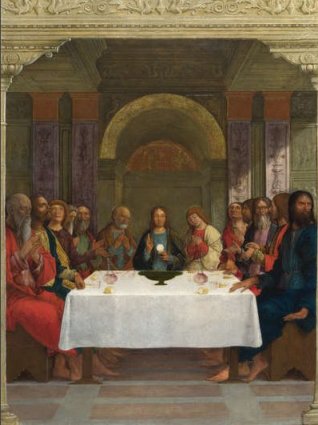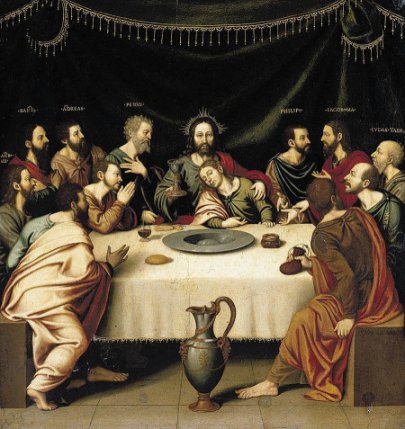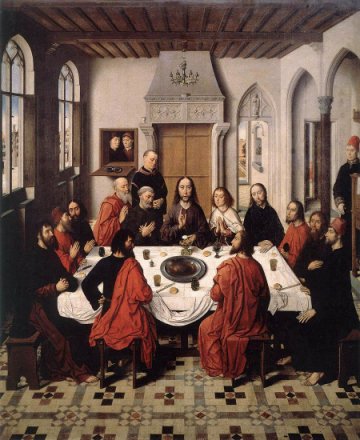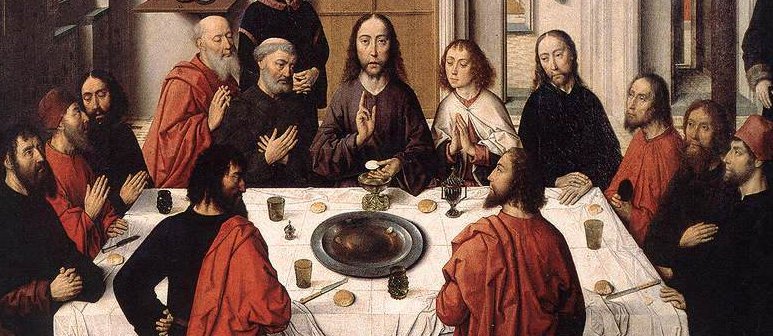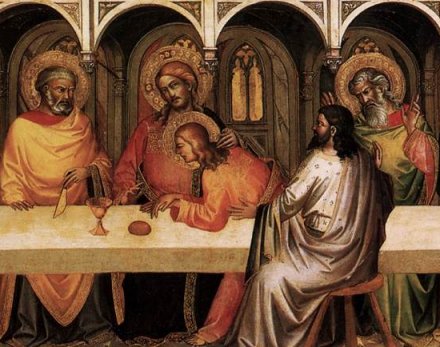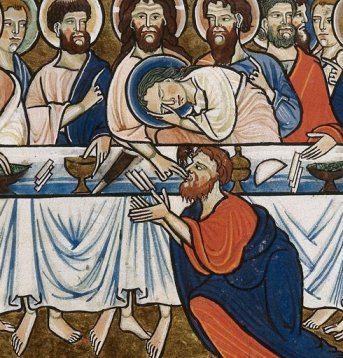|
The Passion of Christ |
|
|
The Last supper - page 4 |
|
|
On to Leonardo. Well, not quite; I want to
consider that other important element in Last Supper images, the
Institution of the Eucharist, in more detail first. I've already suggested that the Eucharistic elements (solemn, sacramental) and the narrative elements (the disciples' reactions to the news of betrayal) can be seen as contradictory - how can both elements be included in a single image? In some Last Suppers the focus is clearly on the Eucharist. The painting on the left below by Ercole de Roberti (c1490) is clearly so - indeed, the painting is entitled 'The institution of the Eucharist' though whether the artist came up with that is doubtful. The later painting by the Spanish artist Fray Nicolas Borras on the right (1570s) Shows Christ holding the chalice. The hand gestures of the apostles are interesting - this is of course a post-Leonardo picture. The disciples on Christ's right have gestures appropriate to the Eucharist, while at first glance those on his left seem not to - though perhaps we shouldn't be too definite about that! |
|
|
|
|
|
The painting below is by the Flemish artist Dieric Bouts - we've met his Judas before. This come from an altarpiece called 'The Altarpiece of the Sacrament', so no doubt there what's intended. I'm including a close up of Christ and the disciples - look particularly at their hand gestures. This painting is dated 1464 - 47 - well before Leonardo. |
|
|
|
|
|
|
|
|
The two images below are details from pictures we
have already seen - a painting by Lorenzo Monaco, and the Oxford Psalter
of around 1220. In the picture by Lorenzo, the table is empty apart from
the chalice and the bread. Peter is holding his knife; yes, the weapon he
will be using in Gethsemane, but could it be a symbol of sacrifice as
well? Look too at the disciple on the right of the picture. We'll come
back to him. The Oxford Psalter shows Jesus feeding Judas with the sop - here, a clear image of the Eucharist. Another disciple - probably Peter - holds the chalice. I've said that these early images from illuminated manuscripts almost invariably show this incident, thus combining narrative and sacred elements. If you look back to the Augustine Gospels on page 2, you'll see that the focus is entirely Eucharistic. |
|
|
|
|
|
At this point I hear you drumming your fingers on the table and saying - what about Leonardo then? What many regard as the seminal work on Leonardo's painting, Leo Steinberg's Leonardo's Incessant Last Supper , was published in 2001. In this book, Steinberg claims that the straightforward, secular interpretation that has held forth for at least a couple of centuries is not tenable; it is a far more profound work than that suggests and, even in its ruined state, this can clearly be demonstrated. There's plenty to say on this - perhaps we'd better start a new page. |
|
